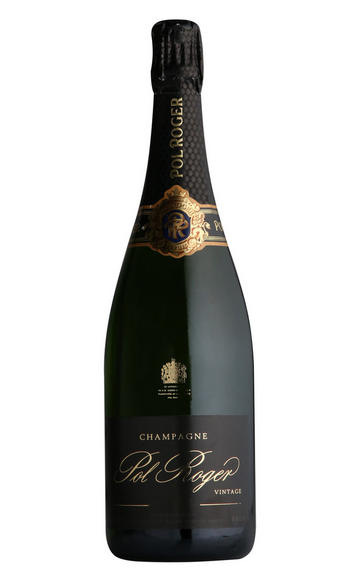
2004 Champagne Pol Roger, Brut
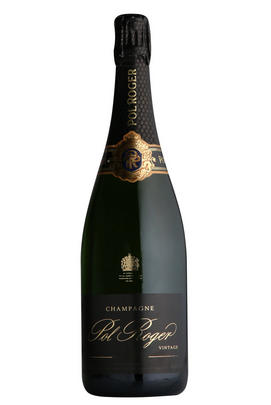
Critics reviews
Sarah Jane Evans - BBC Good Food Magazine - December 2014
About this WINE
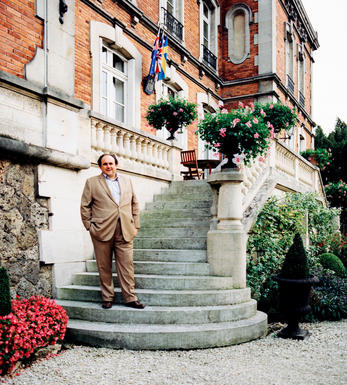
Pol Roger
Pol Roger is perhaps best known as Winston Churchill's favourite Champagne. The house remains family-owned and has a reputation for producing champagnes of finesse and elegance which age very well. Pol Roger Brut Rèserve Non-Vintage, made from equal parts of Chardonnay, Pinot Noir and Pinot Meunier, is consistently one of the very best on the market, largely due to the high proportion of aged reserve wines in the blend.
Pol Roger vintage wines, made from at least 60% Pinot Noir and up to 40% Chardonnay, are soft and fruit-driven in youth but, after ten years or so, develop great complexity and finesse. The Cuvée Sir Winston Churchill, launched in 1984 and made from a secret blend, is a Champagne of exquisite finesse and balance and one that rivals the very best of the region.
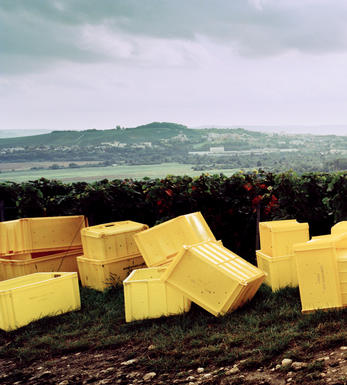
Brut Champagne
Brut denotes a dry style of Champagne (less than 15 grams per litre). Most Champagne is non-vintage, produced from a blend from different years. The non-vintage blend is always based predominately on wines made from the current harvest, enriched with aged wines (their proportion and age varies by brand) from earlier harvests, which impart an additional level of complexity to the end wine. Champagnes from a single vintage are labelled with the year reference and with the description Millésimé.
Non-vintage Champagnes can improve with short-term ageing (typically two to three years), while vintages can develop over much longer periods (five to 30 years). The most exquisite and often top-priced expression of a house’s style is referred to as Prestige Cuvée. Famous examples include Louis Roederer's Cristal, Moët & Chandon's Dom Pérignon, and Pol Roger's Cuvée Sir Winston Churchill.
Recommended Producers : Krug, Billecart Salmon, Pol Roger, Bollinger, Salon, Gosset, Pierre Péters, Ruinart
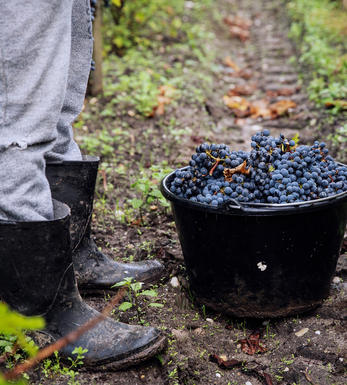
Champagne blend
Which grapes are included in the blend, and their proportion, is one of the key factors determining the style of most Champagnes. Three grapes are used - Pinot Noir, Chardonnay and Pinot Meunier.
26% of vineyards in Champagne are planted with Chardonnay and it performs best on the Côtes des Blancs and on the chalk slopes south of Epernay. It is relatively simple to grow, although it buds early and thus is susceptible to spring frosts. It produces lighter, fresher wines than those from Burgundy and gives finesse, fruit and elegance to the final blend. It is the sole grape in Blancs de Blancs, which are some of the richest long-lived Champagnes produced.
Pinot Noir accounts for nearly 40% of the plantings in Champagne and lies at the heart of most blends - it gives Champagne its body, structure, strength and grip. It is planted across Champagne and particularly so in the southern Aube district.
The final component is Pinot Meunier and this constitutes nearly 35% of the plantings. Its durability and resistance to spring frosts make the Marne Valley, a notorious frost pocket, its natural home. It ripens well in poor years and produces a soft, fruity style of wine that is ideal for blending with the more assertive flavours of Pinot Noir. Producers allege that Pinot Meunier lacks ageing potential, but this does not deter Krug from including around 15% of it in their final blends.


Buying options
Add to wishlist
Description
Following the fabulous 2002 was never going to be an easy task but the team at Pol Roger have pulled it off with aplomb. Citrus, white flowers and brioche vie for attention on the nose.
There is a fine, taut power on the palate, broader and more generous than recent vintages and full of gingerbread, ripe stone fruit and red apple, held together by a filigree thread of acidity. This is delicious now, but will reward a year or so in the cellar and drink well for at least a further decade. Reminiscent of the superb (and underrated), 1998. A must for all Champagne fans.
Fergus Stewart, Private Account Manager
Pol Roger is a Champagne house known for their stylish, elegant wines with fabulous age-ability. Tom Stevenson, arguably the world’s greatest Champagne critic, once said "If I were to choose just one house from which to source a vintage Champagne to lay down, there is no question that I would choose Pol Roger."
The last two vintages, 2002 and 2004, are both exceptional years for Champagne. Similar to the twin vintages of 2009 and 2010 in Bordeaux, 2002 and 2004 Champagnes are of similar quality but of different styles. 2002 is focussed on structure, elegance and precision. 2004 is a vintage “on steroids”, boosted by sunshine, they are rich and concentrated, yet balanced by a backbone of acidity that will allow these to age for a long time.
Chris Pollington, Private Account Manager
The wine displays a very attractive pale straw colour. The nose is mineral and elegant with complex aromas of white flowers, quince and subtle brioche overtones. On the palate the wine is intense yet retains a sense of delicacy with balanced notes of stone fruit, acacia honey and citrus underpinned by a fine thread of acidity. Excellent freshness and persistence, with ample concentration and richness to develop over the next 3-7 years.
Winemaker’s notes
wine at a glance
Delivery and quality guarantee